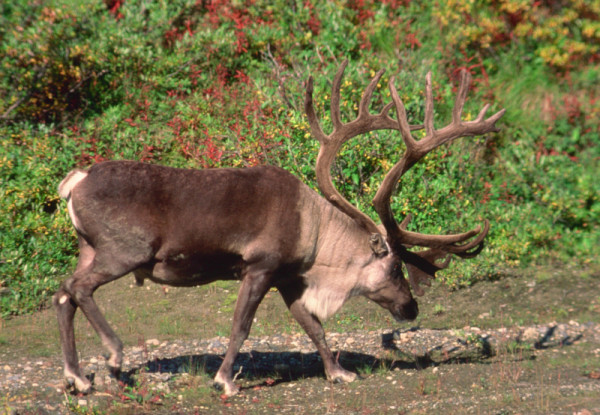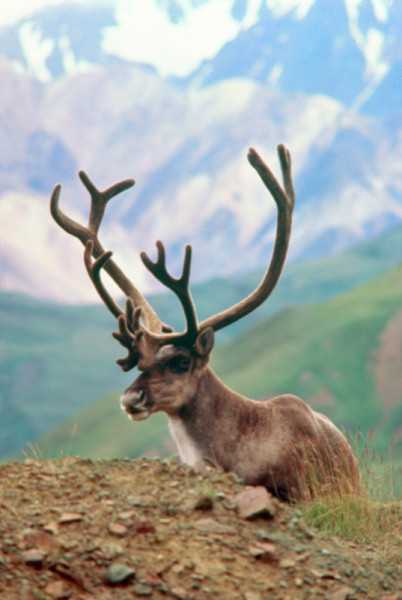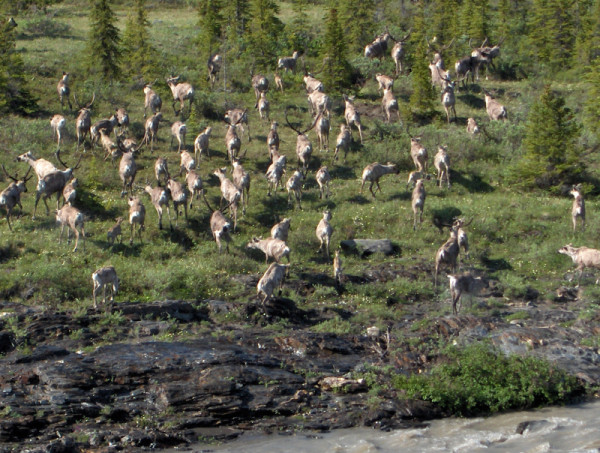Meet Our Species of the Month: the caribou!
This blog series on Canadian wildlife explores key facts, threats and what WWF is doing to conserve these species. These Canadian species are also featured in the TELUS 2014 calendar. Read on for interesting caribou facts.
Where do caribou live?
The caribou, Rangifer tarandus, weighs from 65 kg to up to 210 kg depending on the subspecies. A member of the deer family, the shy and secretive caribou lives throughout the tundra and boreal forests of Canada. The caribou is a truly circumpolar animal, linking regions and people around the globe. Some caribou herds head north in one of the world’s great large-animal migrations – sometimes travelling more than 1,000 km. Three types of caribou are found in Canada.
Are caribou endangered?
The boreal forest or woodland caribou are not migratory, are low in numbers, found in small groups, and have been formally classified as “threatened” through their range in Canada.

The mountain caribou, which migrate short distances between lower and higher elevations, are generally abundant in the northern part of their Canadian range. Some specific herds in the south are highly endangered.

The migratory tundraor arctic (also called barren-ground) caribou are the iconic large herds of thousands of animals that migrate long distances. These populations fluctuate dramatically. Most herds today are in decline, some are at risk, and a few appear to have stabilized and are beginning to recover.

Quick caribou facts
- Unlike other members of the deer family, both male and female caribou have antlers.
- When caribou forage on vegetation in the summer, they change the decomposition and nutrients of the tundra soil. Their droppings add nitrogen to the soil and water.
- Caribou are an important prey species for many carnivores in the Arctic, including golden eagles, gray wolves, and polar bears.
- For thousands of years, caribou have provided the basis of life for many cultures in Canada, Sweden, Finland and Russia through meat and fat, skins for clothing, bedding and tents; sinew for sewing and antlers for tools.
Why are caribou at risk?
As the Arctic warms, vegetation patterns are shifting and forcing caribou to adapt their range to the availability of forage. Wild caribou are migratory, and their habitat crosses territorial and national borders. As the climate changes, and migration patterns shift, it will be increasingly important for governments to implement plans that support wildlife and ecosystems. Infrequent monitoring of populations means hunting quotas for caribou may not be updated quickly enough, increasing pressure on previously healthy populations.
What is WWF doing to help caribou?
WWF helped set up the Canadian Boreal Forest Agreement, which aims to protect large portions of the caribou’s habitat for years to come. In recent years, WWF has prepared a draft strategy for migratory tundra caribou and wild reindeer for the entire world’s Arctic. This “circum-arctic” conservation plan is in keeping with WWF’s worldwide presence and conservation ambitions.
WWF-Canada and TELUS are partnering to support the conservation of Canadian wildlife and their habitats through a new $1 million, four-year partnership. Visit www.givewherewelive.ca to learn more.

